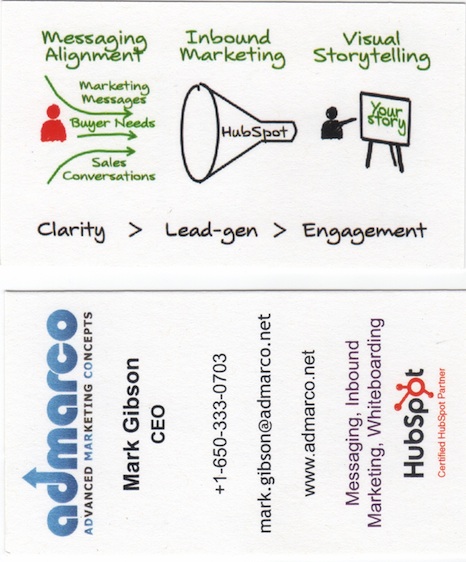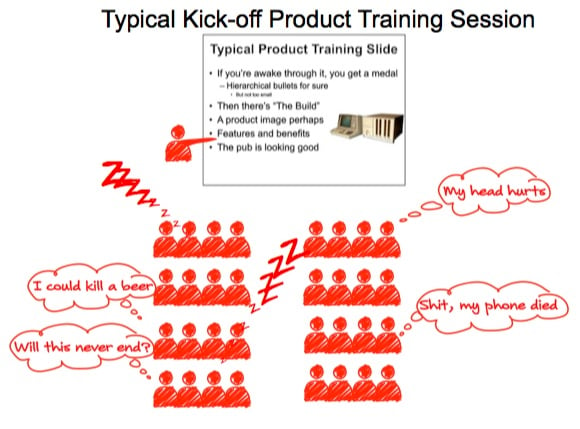The purpose of sales communication is to have the buyer interact with both the sender and the material, to engage around the core issues, transform thinking and activate the buyer to create change.
If your sales letters and proposals look visually boring and are chock-full of features and benefits, and “product-speak” that’s all about you, then it's time to stop sending them and re-assess what you are trying to achieve.
Do the images you use on your Website, in your sales letter, proposals and sales conversations create clarity or confusion and cause the buyer to turn off as they try to unpack the meaning of all the chart junk, drop shadows, text boxes and block arrows?
A picture is worth a thousand words - and it truly is when it comes to communicating your ideas on your Website, in-person, over the Internet and in a sales letters and proposals.
Why?
More than 50% of the brain is dedicated to processing information in the visual field. The brain processes images differently than it processes words. Simple images are stored as complete objects, no reconstruction or thought process is required to recognize them or understand their meaning.
Collections of images tell stories in context and pre-date written language, with man’s earliest visual images painted on cave walls at Chauvet Cave in the South of France, some 45,000 years ago. These images give an inkling of the sophistication of the human brain and the power of images alone, to tell a story.
When I create a whiteboard story, I am effectively creating a visual confection, consisting of hand drawn images, words and numbers that tell a story, that is ideally meaningful without any explanation.
If your sales letters and proposals look visually boring and are chock-full of features and benefits, and “product-speak” that’s all about you, then it's time to stop sending them and re-assess what you are trying to achieve.
Do the images you use on your Website, in your sales letter, proposals and sales conversations create clarity or confusion and cause the buyer to turn off as they try to unpack the meaning of all the chart junk, drop shadows, text boxes and block arrows?
A picture is worth a thousand words - and it truly is when it comes to communicating your ideas on your Website, in-person, over the Internet and in a sales letters and proposals.
Why?
More than 50% of the brain is dedicated to processing information in the visual field. The brain processes images differently than it processes words. Simple images are stored as complete objects, no reconstruction or thought process is required to recognize them or understand their meaning.
Collections of images tell stories in context and pre-date written language, with man’s earliest visual images painted on cave walls at Chauvet Cave in the South of France, some 45,000 years ago. These images give an inkling of the sophistication of the human brain and the power of images alone, to tell a story.
Introducing Visual Confections
According to Edward Tufte, Visual Confections are “structures that consist of a multiplicity of image events that illustrate an argument, organize information, show and enforce visual comparisons; they should be transparent, straightforward, obvious, natural, ordinary, conventional…with no need for hesitation or questioning on the part of the viewer.”When I create a whiteboard story, I am effectively creating a visual confection, consisting of hand drawn images, words and numbers that tell a story, that is ideally meaningful without any explanation.




